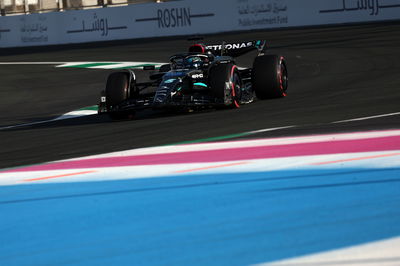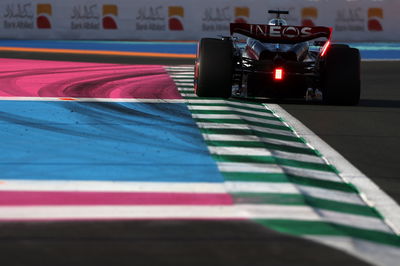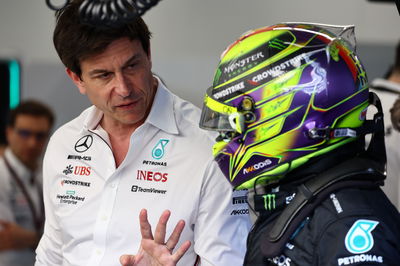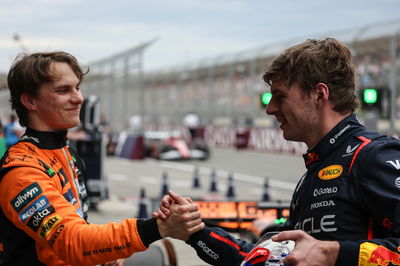F1 cost cap Mercedes’ ‘enemy’? Wolff rules out all-new chassis design in 2023

After a disappointing season-opening Bahrain Grand Prix, Mercedes have decided to pursue a new car concept after realising the development route they went down with their W14 wasn’t the right one.
Lewis Hamilton finished over 50 seconds behind dominant race winner Max Verstappen, and was beaten by Aston Martin’s Fernando Alonso and Ferrari’s Carlos Sainz.
Unlike in previous years, Mercedes - and the other nine F1 teams - are limited by the amount of development and parts they can do during a season due to the cost cap.
As a result, Wolff has confirmed Mercedes won't introduce an entirely new chassis, instead they will be focusing on the aerodynamic flow and bodywork of the car.
“No, it’s out of question that you change a chassis because simply there’s not enough budget in the cost cap,” he said. “Changing the way the aero works, the bodywork, it’s perfectly in scope."
With Mercedes altering their development route for this year, Wolff conceded that it might be a case of ‘taking a step back before making two forward’.
“I think the budget cap in a way has more positives than negatives, but obviously if you’re on the backfoot like we are at the moment it doesn’t allow you to build a second chassis," he explained.
“I think our fundamental problem is not building a second chassis or throwing stuff at the car, it’s more about the direction that we have taken is wrong and I think when we change it now that’s going to be limited by the budget cap but not in the way that you would expect like we’re not able to develop.
“We’re still able to develop but it will mean we need to spend time on a new concept, on new ideas rather than discontinue the old one. In the short term it could mean you take a step back before making two forward. These are the rules.”
“We were misguided by the data”
It seems that Mercedes’ steady improvements through 2022, ultimately winning a race in 2022, gave them false hope that their design concept was good enough to take the fight to Red Bull and Ferrari.

Customer team Aston Martin have made significant gains over the winter, adopting a Red Bull-style philosophy.
Ferrari, who did struggle for race pace in Bahrain, moved towards Red Bull in terms of focusing on aero efficiency and thus straight-line-speed, while Mercedes remain the outlier with their general car design.
Explaining further their decision to ditch their current car’s philosophy, Wolff revealed that the team were “misguided” by the data and their various simulation tools.
"I think we really tried hard to make it work because the data that we have extrapolated showed us that this work,” Wolff added. “We were proven wrong very simply.
"You can see that the two quickest cars, including the Ferrari, the three quickest cars, that have a similar concept of how they generate performance and that’s very different to ours. At a certain stage we came to the conclusion we got this wrong - simply - we got it wrong. Why we got it wrong?
“We are still analysing because we followed the data and followed what the simulations told us but in this case we were misguided by the data. All of us involved in the decision making process came to the conclusion that we can’t continue that way. We really tried to stick to it.”












